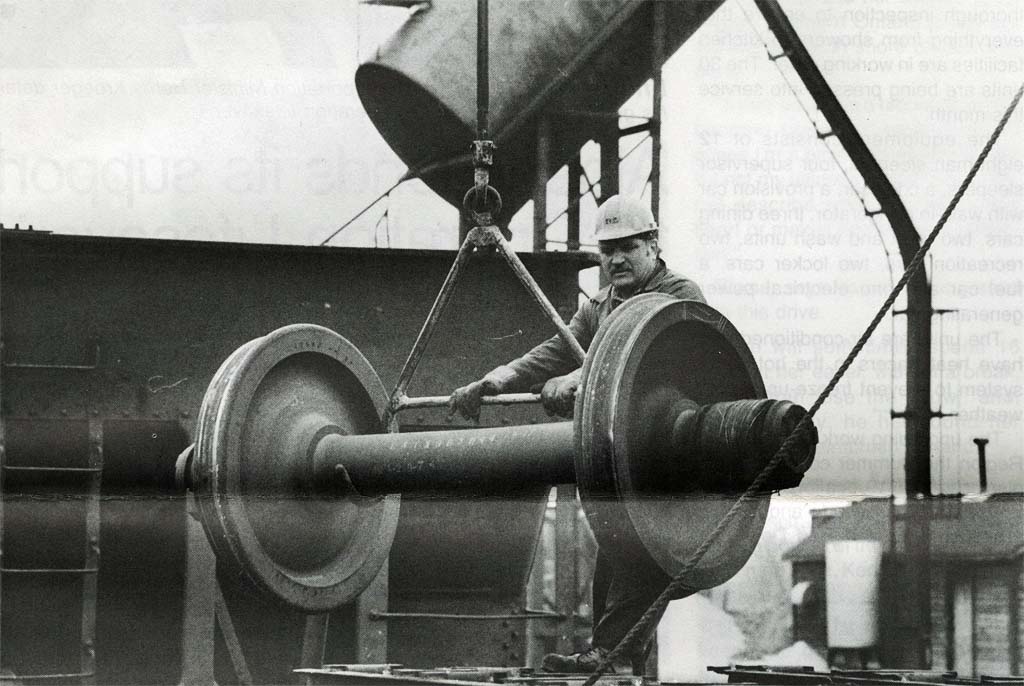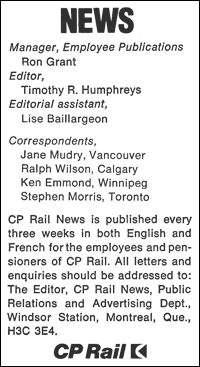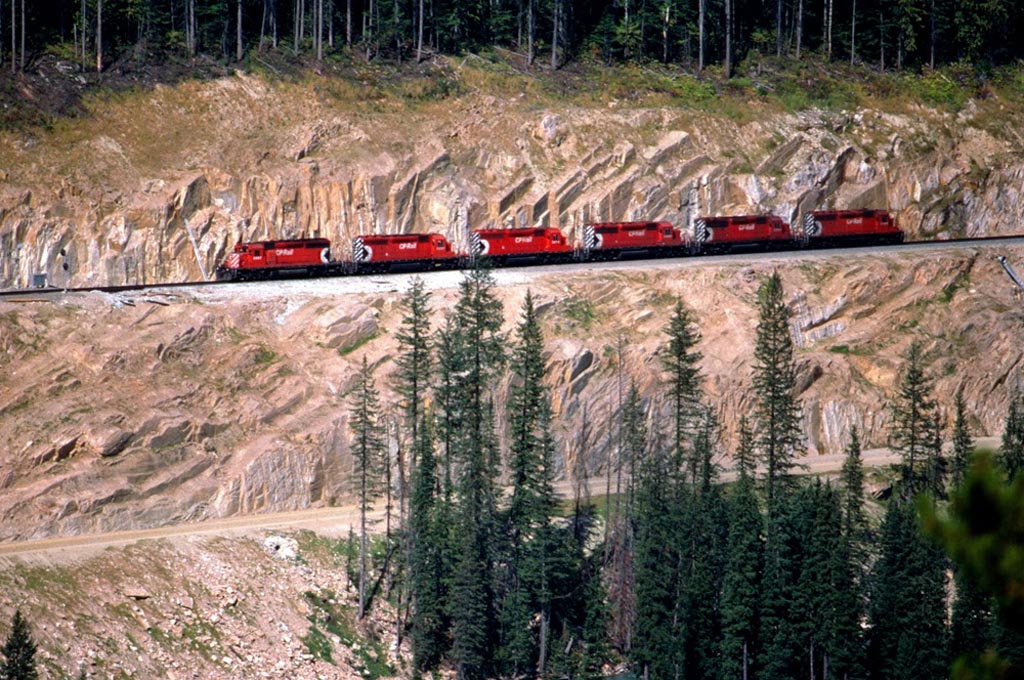|
|
 |
Vol. 12
Number 5 April 14, 1982 |
Western Operations


Calgary - CP Rail is fine tuning its rail operations on the key main line corridor between Calgary and Vancouver to move as much freight
tonnage as it can until planned improvements can be completed, a senior CP Rail executive said recently.
J.D. Bromley, vice-president of the Pacific Region, told the annual meeting of the Western Transportation Advisory Council that CP Rail is aiming to squeeze "every remaining bit of capacity out of its system" until the $500-million-plus Rogers Pass tunnel and track improvement project can be completed.
"To gain maximum tonnage throughput we're looking at the operating times of trains, train meets, signals, roadbed structure, and every other aspect of the operation," he said. "Every added ton we can move each day will shorten the period of limited capacity that will exist until the tunnel is completed."
Bottleneck
Because of steep grades and the need to use pusher locomotives, the Rogers Pass area is the major bottleneck encountered by freight trains between Calgary and Vancouver.
The railway is already running heavier tonnage on many trains as a result of reducing three other gradients in the mountains, and an $8 million project to provide five miles of double track is planned this year to eliminate train delays in the Revelstoke area.
Mr. Bromley said that none of the measures being taken "is a substitute for the Rogers Pass Project, or for having the financial resources to put more than $7 billion into improving the CP Rail system over this decade."
Solving the problem of grain revenues is critical, he said, because "as future capital needs have been growing, so has the financial burden caused by the losses from grain transportation."
 and is reprinted here with their permission.
All photographs, logos, and trademarks are the property of the Canadian Pacific Railway Company.
and is reprinted here with their permission.
All photographs, logos, and trademarks are the property of the Canadian Pacific Railway Company.

